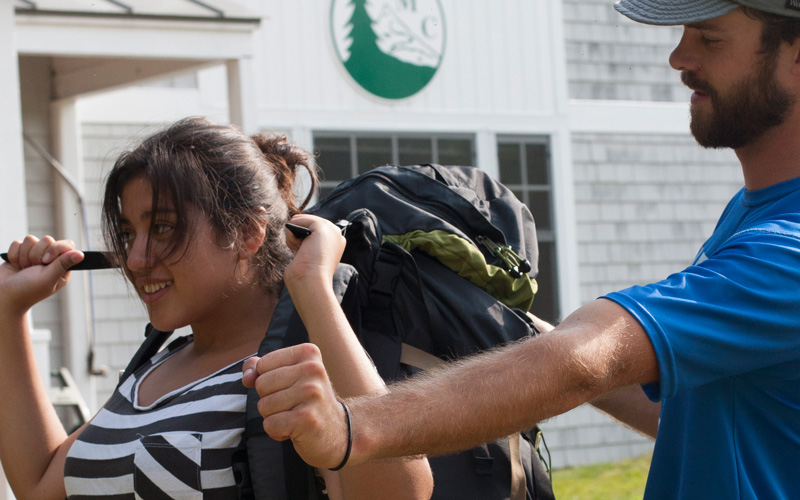Carry in Comfort: How to Fit a Backpack
When it comes to choosing a multiday backpack, forget about pockets, zippers, ventilation, access panels, materials, color, and any other number of design elements. Focus instead on the single most important feature: a good fit. Figuring out how to fit a backpack isn’t difficult, yet it may be one of the most crucial gear skills you’ll ever learn. Here’s what you need to know to prevent a poorly fitting pack from turning your next hike into a miserable slog.
BACKPACK FIT BASICS
A properly fitting backpack should comfortably transfer approximately 80 percent of its weight to your hips and lower body, 20 percent to the front of your shoulders, and exactly zero to the top of your shoulders. The goal is to carry most of the load on the strong bones and muscles of your lower body, rather than on the easily fatigued muscles of your shoulders and torso.
IT’S ALL IN THE HIPS
A properly fitting waistbelt is crucial for transferring weight to your lower body. When trying on a backpack, first loosen the shoulder straps and position the waistbelt so that the bony knob on top of your hips (the iliac crest) is in the middle of the waistbelt. (Wear pants or shorts akin to what you use hiking; at a minimum take off your belt if you’re wearing one.)
Now, snugly cinch the waistbelt and evaluate it for fit. It should rest flush against your body to evenly distribute weight. There should be no gaps anywhere between you and the waistbelt, which can create uncomfortable pressure points. (Some waistbelts have adjustment straps on the side to help fine-tune fit.) The padding on the front of the waistbelt should extend roughly halfway between your hips and the buckle. Otherwise it will dig into your gut when you bend forward, or fail to comfortably transfer weight to your hips.
DON’T SHOULDER THE LOAD
Next, focus on the shoulder straps. Once you have the waistbelt properly positioned, the shoulder straps should attach to the pack about an inch or two below the top of your shoulders. If they connect to the pack above or below this point, move them up or down accordingly or select a larger or smaller pack size as needed.
Most packs feature shoulder straps with two adjustment points: one near the bottom below your armpits, which tightens the straps across the front of your shoulders; and the other— the load lifters or stabilizers—which attaches to the pack just above and behind your ears and lifts the top of the shoulder straps away from your body. The goal is to set these two adjustments so that the shoulder straps run snug across the front of your shoulder, extend up and just off the top of your shoulders, and then curve back down to attach to the pack. (When properly positioned, the load stabilizers should form a 30- to 45-degree angle with the shoulder straps.)
Once the shoulder straps are adjusted properly, you should be able to shrug your shoulders freely and slide a finger between the straps and the top of your shoulders. Note that the closer the straps are to your shoulders, the less the pack will shift from side-to-side, a consideration if you’re scrambling or moving over uneven terrain.
FINAL CHECKS AND ADJUSTMENTS
Clip the sternum strap to connect the two shoulder straps across your chest, which helps minimize the pack’s side-to-side motion as you hike. It should be positioned as its name indicates—across the sternum in the middle of the chest. Also take a look at how the pack sits against your back. There should be a minimum of gaps, with the pack fitting as closely as possible to keep the center of gravity close to your body. Some pack frames feature aluminum stays or other flexible elements that can be used to better mold the pack to your body.
GENDER CONSIDERATIONS
Women’s packs have more conically shaped waistbelts to better match curvier hips, and S-shaped shoulder straps designed to avoid uncomfortable pressure on the breasts. Regardless of gender, however, you should always purchase whichever style fits your body best; in particular, tall and thin women may want to consider men’s styles.





